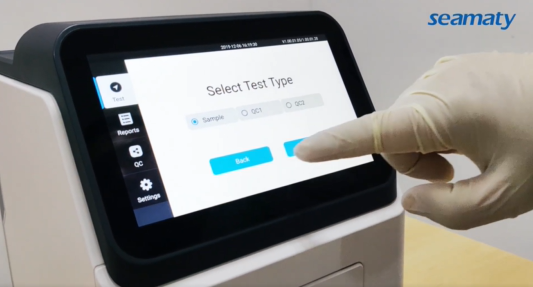1
The biochemistry analyzer should be equipped with a (500 to 1000) W electronic AC voltage regulator. This is to prevent power fluctuations from affecting the measurement results or damaging the instrument. In addition, biochemical instruments must have good grounding.
2
The room where the biochemical analyzer is placed should be away from electromagnetic fields and X-ray sources. It should be dust-free and dry. Keep the ambient temperature in the range of (15-30)℃.
3
Do not switch on and off the biochemistry analyzer frequently in a short period of time. Instrument continuous work generally does not exceed 4h.
4
If the biochemical analyzer is not used for a long time, ensure that the power is turned on once every half month or so, 4h each time, so that the battery in the biochemical instrument can be charged. At the same time can also drive away the moisture in the circuit.
5
The printer should be replaced with new printing paper before the paper roll is almost used up. Avoid emptying the printer without paper. Prevent the rubber wheel from wearing the print sheet. Or print paper with empty can not feed the paper and damage the printer gear.
6
Flush the printer with distilled water after turning it on every day. This is conducive to pipe cleaning and sample zeroing.
7
When it comes to items with standard measurement, take the standard as a sample and measure again. This can be based on the standard value to determine the accuracy of the results.
8
When adding a good specimen to the machine for determination, it should be arranged according to the reaction color from light to dark. After doing each sample should be distilled water as a sample to do once, and then do the next sample. This will prevent cross-contamination affect the results.
9
The biochemistry analyzer should be maintained daily. After doing the sample twice a day, rinse it with distilled water first. Then let the biochemistry machine clean itself. After the instrument is cleaned return to the main screen and turn off the power. Finally, wipe the instrument housing with a slightly damp cloth. Be careful not to let water enter the instrument.
The most common failure of biochemistry analyzer is the blockage of piping or colorimetric cell. As long as the daily maintenance work, you can prevent the colorimetric pool and pipeline blockage, greatly reducing the failure rate of biochemical analyzer.
And seamaty portable biochemistry analyzer is easy to operate. No sample pre-treatment, no dilutions to add. Easy 3 steps, add sample, release sample, read results. Let the physician no longer worry about the complex operation of the instrument.


